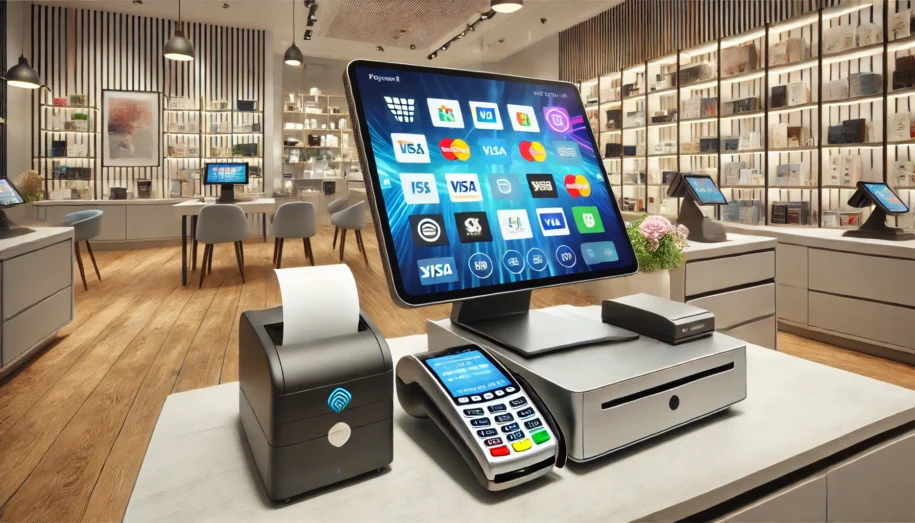In the dynamic world of payments, Independent Sales Organizations (ISOs) have traditionally held a pivotal role in bridging the gap between merchants and payment processors. However, the landscape is rapidly evolving, driven by technological advancements and shifting market dynamics. One of the most significant changes is the consolidation of point-of-sale (POS) providers, many of whom are now offering their own payment processing solutions. This evolution necessitates a fundamental shift in how ISOs approach relationships with technology providers.
The Rise of Integrated POS Solutions
Over the past few years, the POS industry has undergone significant consolidation. Larger POS providers are acquiring smaller players, creating robust, integrated solutions that offer everything from inventory management to customer relationship management (CRM) and, increasingly, payment processing. This trend poses a challenge for traditional ISOs, who have historically relied on a more fragmented market where they could offer standalone payment processing solutions.
The consolidation means that merchants are now more likely to choose an all-in-one solution that simplifies their operations. POS providers that offer integrated payment processing can provide a seamless experience, reducing the need for multiple vendors and simplifying the reconciliation process. For ISOs, this trend signals a need to reevaluate their value proposition and consider how they can adapt to remain relevant.
The Imperative for Strategic Partnerships and Advanced Gateways
To thrive in this new environment, ISOs must embrace a more open-minded approach to strategic relationships. This involves recognizing that the traditional competitive stance towards POS vendors is no longer sustainable. Instead, ISOs should seek to build collaborative partnerships that leverage the strengths of both parties. One significant area of opportunity is investing in robust gateways that accommodate advanced payment functionalities.
- Advanced Payment Routing and Split Payments: ISOs can differentiate themselves by offering advanced payment routing and split payment capabilities. These features are increasingly important for merchants who need to manage complex transaction scenarios, such as marketplaces and multi-vendor platforms. By providing these advanced functionalities, ISOs can offer solutions that meet the specific needs of diverse business models.
- Platform Fees and Custom Integrations: Another critical area is the ability to handle platform fees and provide custom integrations. This is particularly relevant for software-as-a-service (SaaS) platforms and other subscription-based businesses. ISOs can develop gateways that support these requirements, offering merchants a seamless and integrated payment experience.
- Partnerships with ISV’s: ISOs need to focus on forming strategic partnerships with ISV’s. The best partnerships are made when each party provides a specific value proposition and both parties benefit financially. In the case for ISO’s, they can provide a much needed distribution network for the technology provider that may be new to market or even just starting out. This brings tremendous value in gaining marketshare while allowing the ISV’s to focus on delivering vertical-specific solutions that will help solve problems for the end-users (merchants). As for the ISO, fostering the right partnerships can give them access to products that give them a competitive edge over their rival ISO’s and thus provides longevity to sell their payments into verticals being driven by technology.
Navigating the New Landscape
To successfully navigate this new landscape, ISOs need to adopt a proactive and forward-thinking approach. Here are a few strategies to consider:
- Invest in Technology: ISOs must invest in their own technological capabilities to keep pace with the evolving market. This includes developing robust gateways that support advanced payment functionalities and ensuring seamless interoperability with various POS systems.
- Focus on Relationships: Building strong, mutually beneficial relationships with POS providers and banks is crucial. This involves open communication, trust, and a willingness to explore new business models that benefit all parties involved.
- Educate and Train: ISOs should invest in educating their sales teams and partners about the benefits of advanced gateways, integrated solutions, and strategic partnerships. This will help align internal teams with the new strategic direction.
- Invest in Legal Due Diligence: A common mistake amongst ISO’s is giving a technology provider access to their clients without protecting themselves from the technology provider becoming their competitor. While that sounds incredibly unethical on the surface, it happens all the time – Just look at Toast, NMI, etc. When negotiating contracts with ISV’s, it’s important to think long-term and have specific language that will prevent the technology provider from becoming your competitor. On the flip side, you also don’t want your redlines to come off to be one-sided as the ISV too has to think about their customers. It’s important to protect yourself while also protecting your potential future partner. For example, if your legal team is demanding a 5 year do-not-solicit for your ISO, they should instead consider a more reasonable term (1-3 years) and to make it mutually binding.
Conclusion
The payment processing landscape is undergoing a significant transformation, driven by the consolidation of POS providers and the emergence of integrated solutions. For ISOs, this presents both a challenge and an opportunity. By embracing strategic partnerships, investing in advanced gateways, and focusing on value-added services, ISOs can position themselves as indispensable partners in the payments ecosystem. The key to success lies in being open-minded, collaborative, and adaptable in the face of change.
